The ARM vs x86 Wars Have Begun: In-Depth Power Analysis of Atom, Krait & Cortex A15
by Anand Lal Shimpi on January 4, 2013 7:32 AM EST- Posted in
- Tablets
- Intel
- Samsung
- Arm
- Cortex A15
- Smartphones
- Mobile
- SoCs
Krait: WebXPRT 2013 Community Preview 1
I also included Principled Technologies' new HTML5/js web test suite WebXPRT in our power analysis. Intel and Qualcomm remain quite close in these tests. I didn't run the Qualcomm tests at the same time as the Intel tests the charts graphs aren't perfectly aligned, as a result it looks like Intel took longer to complete the test when in reality the opposite is true. Once again at the platform level, the W510 beats the XPS 10, but at the CPU level Krait manages to do better than Atom. Looking at GPU power consumption alone, Intel/Imagination are once again more power efficient. As 3D performance doesn't matter much here, the Qualcomm/Adreno 225 3D performance advantage does nothing - it just costs more power.
Once again there's no contest when we include Tegra 3 in the comparison. Atom/Krait are in a different league. It'll be interesting to see how Tegra 4 will do here...
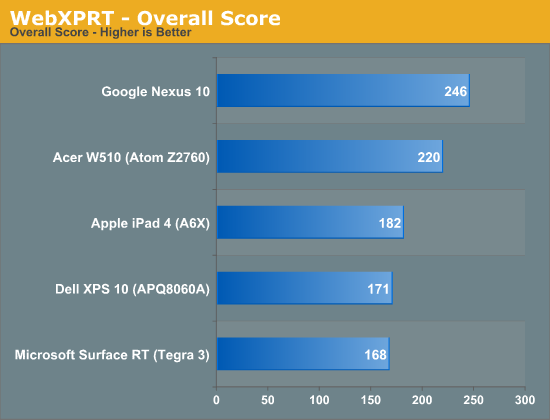
TouchXPRT 2013
As our first native client test, we turned to PT's TouchXPRT 2013. As there is no "run-all" functionality in the TouchXPRT benchmark, we had to present individual power curves for each benchmark. Unlike the previous tests where Qualcomm was consistently slower than Intel, many of the TouchXPRT tests show the two competitors performing quite similarly. This gives us a better idea of how these two fare when performance is equal. For the most part, Acer/Intel seem to win at the platform and GPU levels, while Qualcomm takes the win at the CPU level. Once again, it's not abundantly clear to me how much of Qualcomm's CPU core power advantage is due to the fact that we're not taking into account power consumption of the L2 cache.


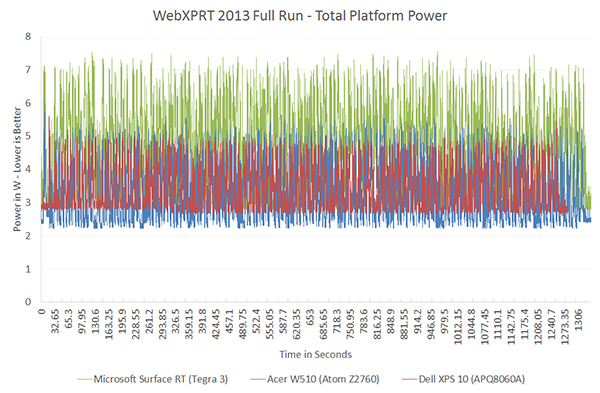
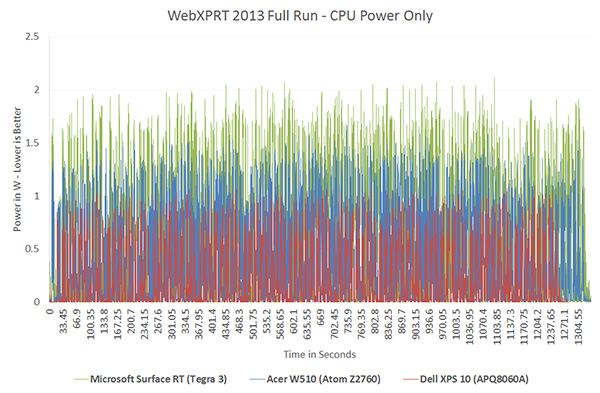
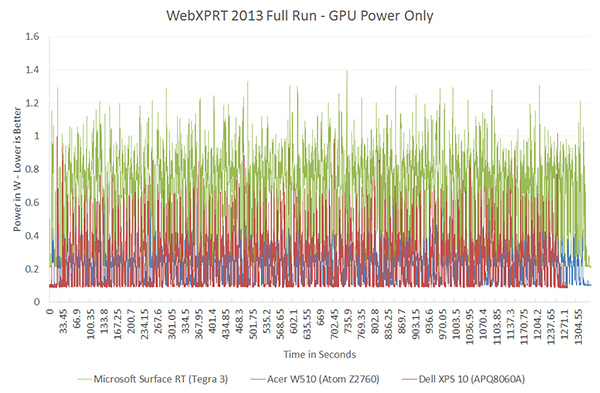
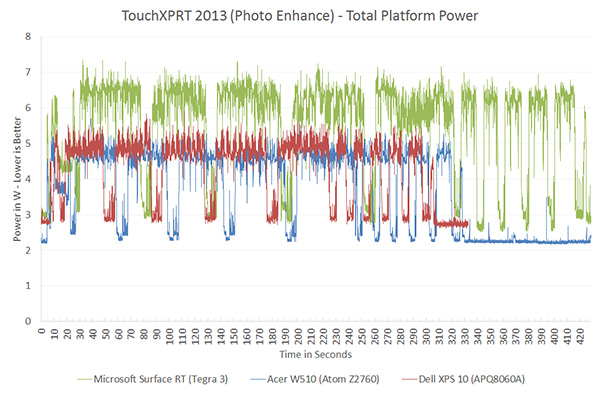
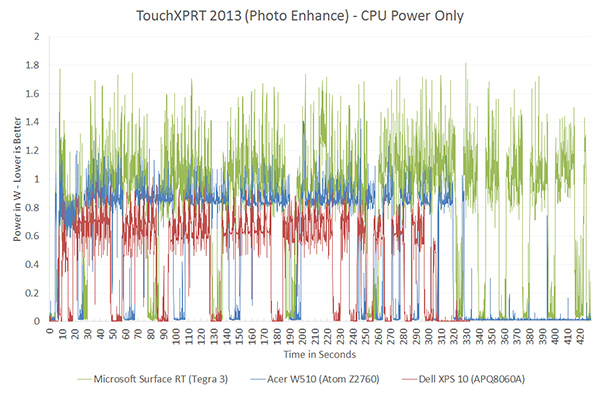
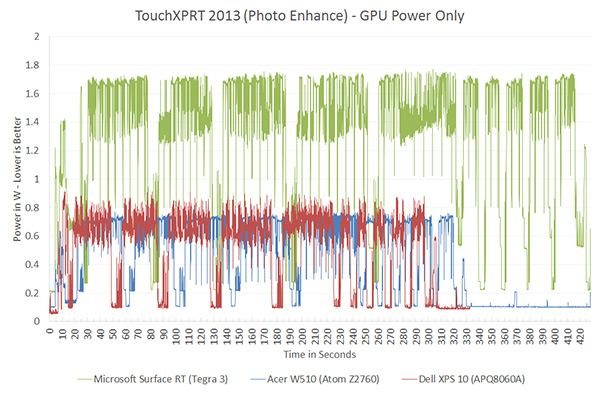

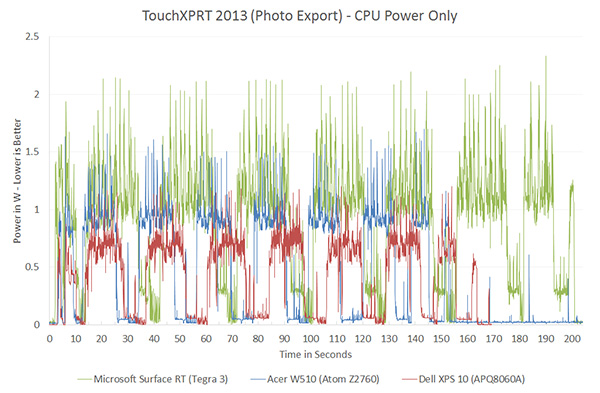

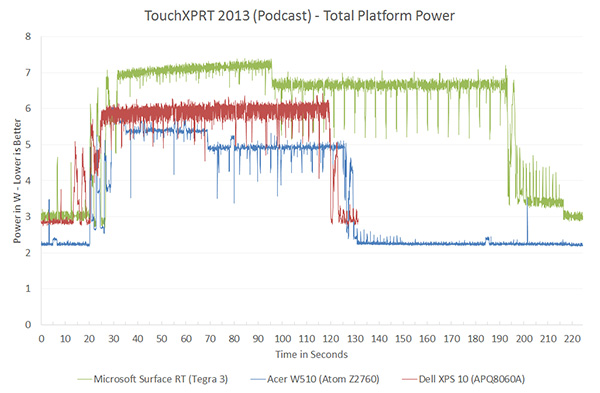
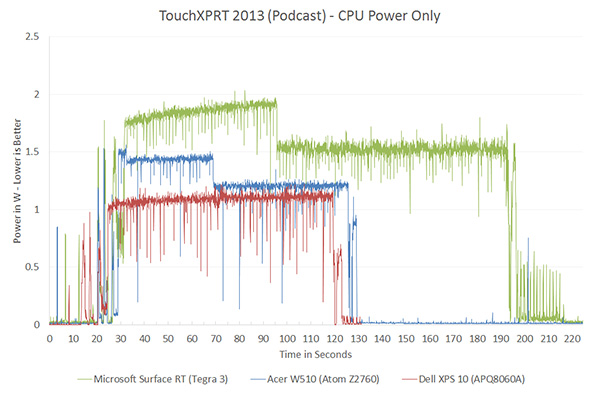
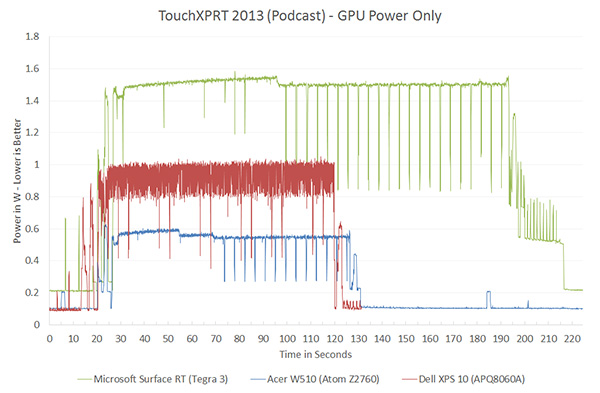
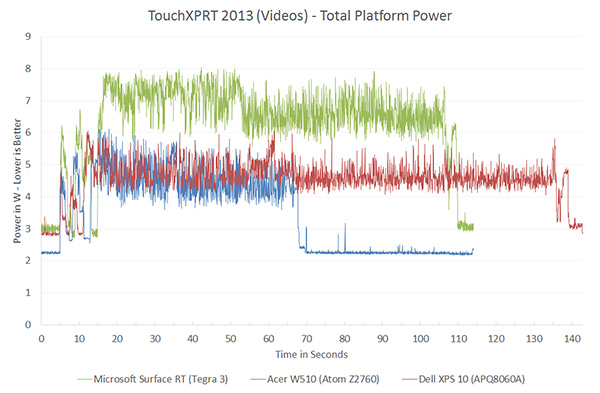

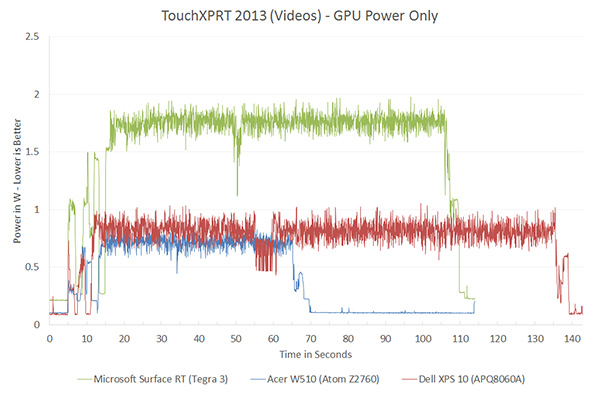








140 Comments
View All Comments
extide - Friday, January 4, 2013 - link
When will you post an article about Bay Trail / Valley View?? Usually you guys are pretty fast to post stuff about topics like this yet I have seen some info on other sites already...jpcy - Friday, January 4, 2013 - link
...which I bet CISC users thought had ended about 18 years ago...It's good to see a resurgence of this highly useful, extremely low-power and very hardy British CPU platform.
I remember back in the day when ARMs were used in the Acorn computers (possibly too long ago for most to remember, now - I still have an A7000 and a RISC PC with both a StrongARM and a DX2-66 lol) was at war with Intel's Pentium CPU range and AMD's K6's, boasting an almost 1:1 ration of MIPS:MHz - Horsepower for your money (something Intel and AMD were severely lacking in, if I remember correctly.)
And now, well, who'dve thought it... These ARM CPUs are now in nearly everything we use... Phones, smartphones, tablets, notebooks...
Suppose I was right in the argument with my mate in school afterall... RISC, superior technology (IMHO) may well take over, yet!
nofumble62 - Friday, January 4, 2013 - link
No performance advantage, no battery life advantage. Why anyone would bother with incompatible software?sseemaku - Friday, January 4, 2013 - link
Looks like people have changed religion from AMD to ARM. Thats what I see from some comments.mugiebahar - Saturday, January 5, 2013 - link
Yeah n no. They wanted a no paid opinions to screw with the outcome. But Intel hype won over real life .Intel better and will get better - yes
Any chance they will compete (performance and PRICE) and legacy. Support to phone apps - Never in the near future which is the only time for them.
tuxRoller - Saturday, January 5, 2013 - link
Also, any chance for an actual performance comparison between the platforms?Apple's performance and power use look awesome. Better than I had imagined.
I'd love to see how they compare on the same tests, however.
Kogies - Saturday, January 5, 2013 - link
It appears the war has begun, well two wars in fact. The one you have articulately described, and the oft ensuing war-of-words...Thanks Anand, I appreciate the analysis you have given. It is excellent to get to see the level of granularity you have been able to achieve with your balance of art and science, and knowing where to hook into! I am very interested to see how the L2 cache power draw effects the comparison, just a little jitter in my mind. If nothing else, it looks as if the delicate balance of process tech., and desired performance/power may have a greater bearing on this "war" than mere ISA.
With Krait 300, Haswell, and more A15's this is going to be a tremendous year. Keep up the good work.
Torrijos - Saturday, January 5, 2013 - link
Any chance we could see the same tests run on the latest Apple iPad?That way we could have a chance to see what Apple tried to improve compared to the A15 generation.
urielshun - Saturday, January 5, 2013 - link
The whole discussion about ARM and x86 is not important when you go for the ecomonics of each platform. ARM is dirty cheap and works well. It's 1/10th of the price of any current Atom with decent perfomace (talking about RK3066).Don't underestimate the Chinese they are having a field day with ARM's pricing model and and have shown amazing chips.
In 8 years from now all SoC's would have reached the usuable performace and the only thing that will matter will be power and cost of integration.
iwod - Saturday, January 5, 2013 - link
Where are you getting 1/10 of a price from? Unless they are produced on good old 40nm LP Node with Nothing else, or crap included, otherwise there just aren't any Chinese SoC selling for $4